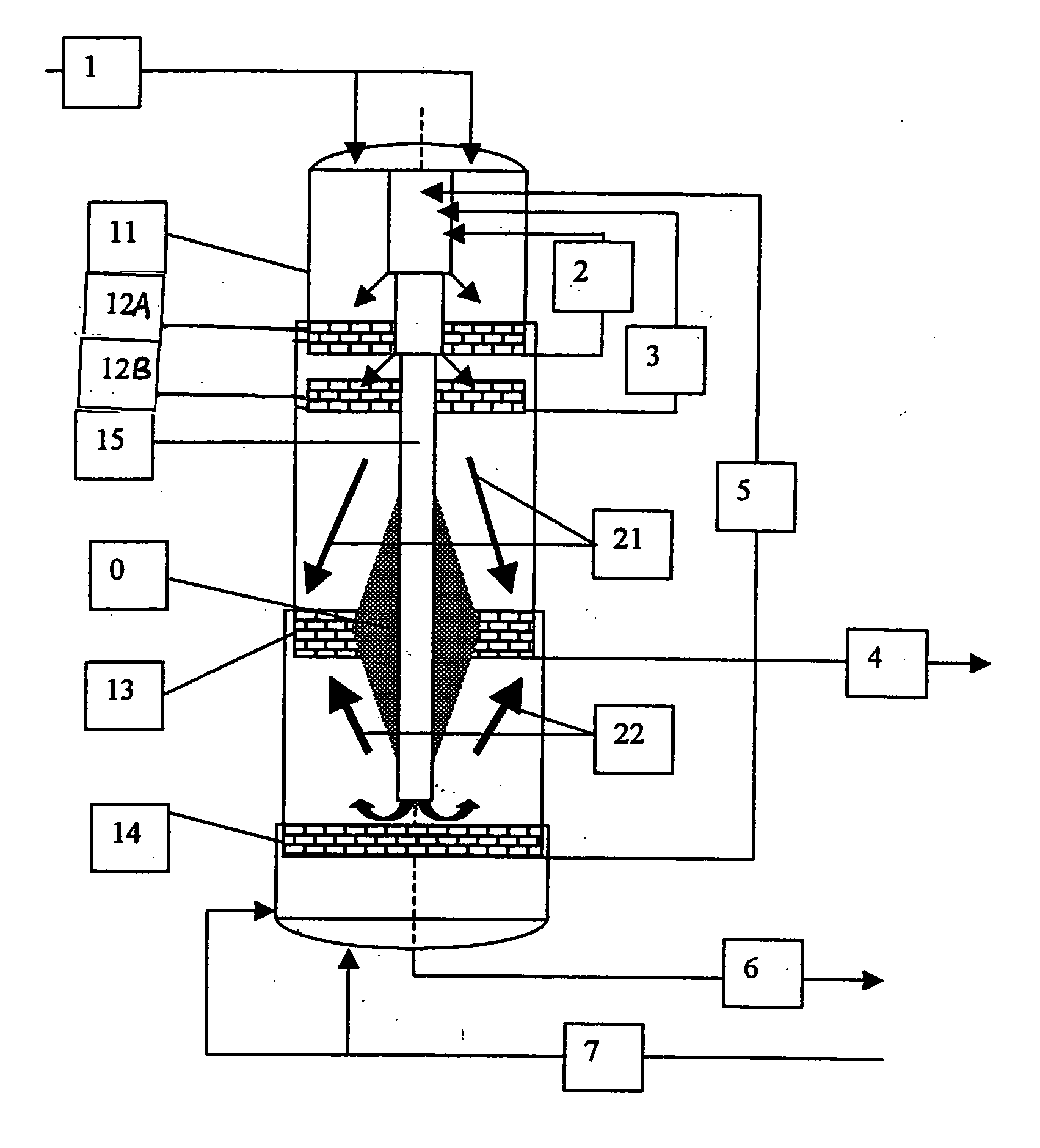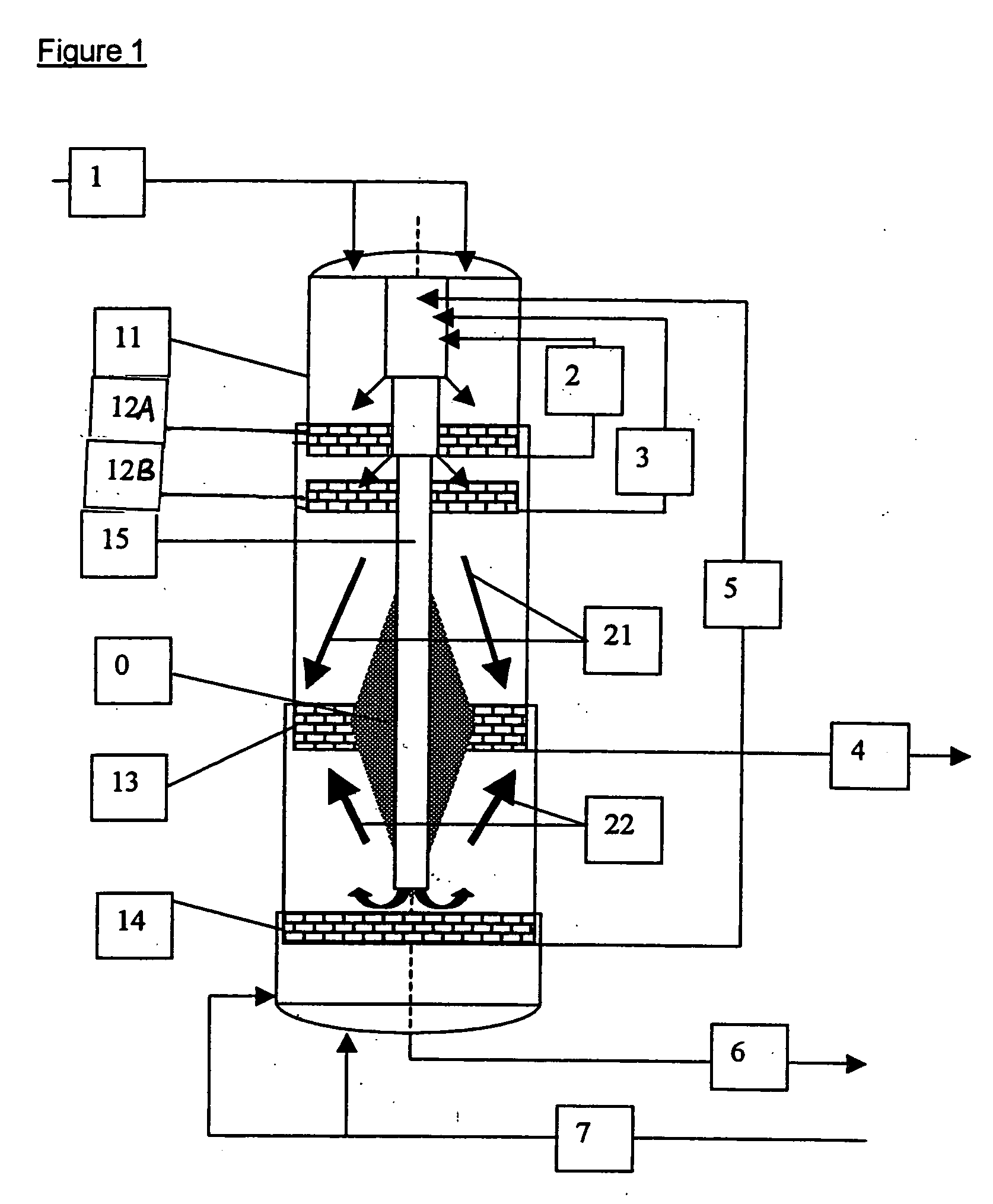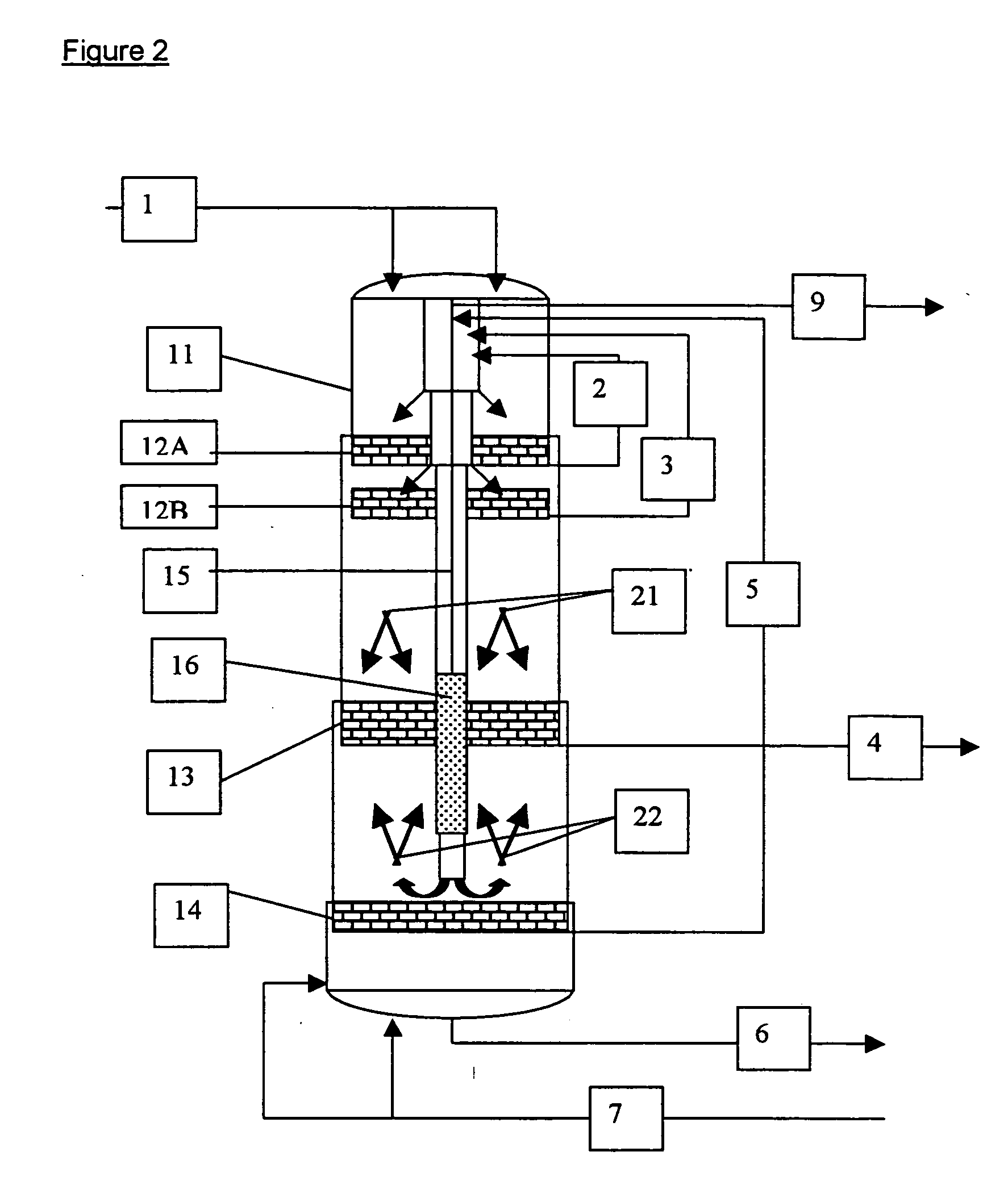Central screen
a central screen and filter screen technology, applied in the field of filter screen, can solve the problems of increased dynamic pressure loss, increased production loss, and dynamic pressure loss of radial flow, and achieve the effect of reducing the compaction of the chip column, increasing the amount of circulation or extraction flow, and increasing the load of the individual screen
- Summary
- Abstract
- Description
- Claims
- Application Information
AI Technical Summary
Benefits of technology
Problems solved by technology
Method used
Image
Examples
Embodiment Construction
[0028]FIG. 1 shows the general outline of a prior art continuous hydraulic digester. It consists of a pressure vessel (11), upper and lower cooking circulation screens (12), mounted to the upper part of the pressure vessel (11), extraction screens (13) mounted close to the middle part of the vessel, and optional washing circulation screens (14) mounted close to the bottom of the pressure vessel. Along the vertical center line of the vessel (11) there is typically a central pipe (15), which comprises a single pipe or several nested pipes. Through this central pipe, separate circulation entry flows are conveyed to different levels of the vessel (11). General liquid flow directions inside the pressure vessel (11) toward the extraction screens (13) are shown by arrows (21). The chips to be cooked and the liquid cooking chemical are introduced into the upper part of the pressure vessel (11) through a feed line (1). In the pressure vessel (11), the chips form a porous chip column, the por...
PUM
| Property | Measurement | Unit |
|---|---|---|
| pressure | aaaaa | aaaaa |
| diameter | aaaaa | aaaaa |
| chemical | aaaaa | aaaaa |
Abstract
Description
Claims
Application Information
 Login to View More
Login to View More - R&D
- Intellectual Property
- Life Sciences
- Materials
- Tech Scout
- Unparalleled Data Quality
- Higher Quality Content
- 60% Fewer Hallucinations
Browse by: Latest US Patents, China's latest patents, Technical Efficacy Thesaurus, Application Domain, Technology Topic, Popular Technical Reports.
© 2025 PatSnap. All rights reserved.Legal|Privacy policy|Modern Slavery Act Transparency Statement|Sitemap|About US| Contact US: help@patsnap.com



